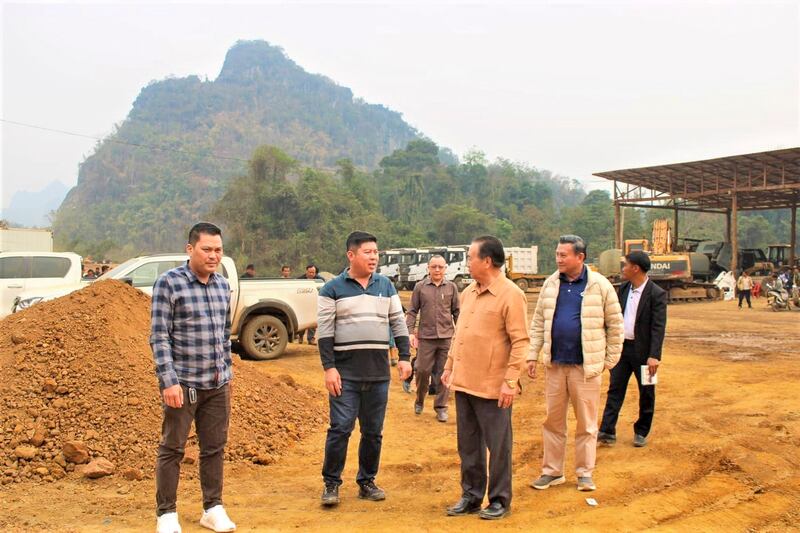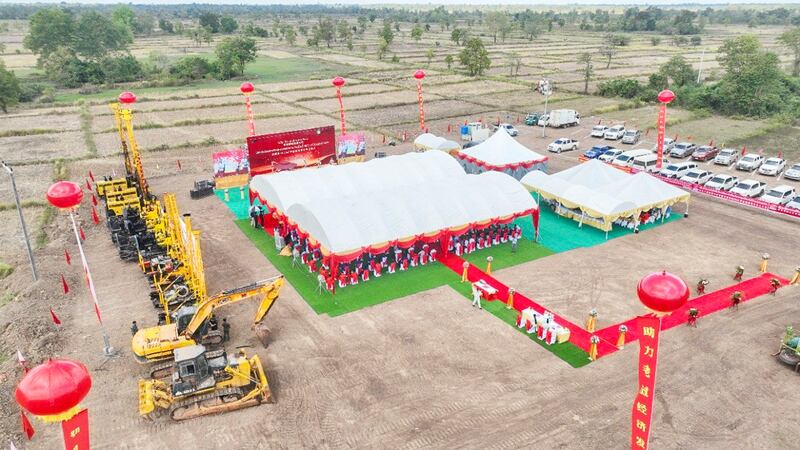A lack of experts and technicians in Laos’ Ministry of Energy and Mines has led to poor management of the sector, even as the number of hydropower and mining projects in the country grow, according to a report by the ministry’s personnel department.
The report follows a ministry survey that found nearly half of mining companies operating in Laos have failed to meet industry standards and comply with regulations or contractual obligations.
Last week, the Ministry of Energy and Mines’ Department of Personnel and Organization released a report which said that the ministry currently employs around 1,800 people throughout the country. It said most of the employees work in provincial offices as administrative staff, while the number of experts and technicians is “limited” and shrinking.
In order to manage and monitor the growing number of hydropower and mining projects in the country, the April 8 report found that the ministry needs to employ at least 2,500 employees by 2025, and increase the number of its skilled staff.

An official who is familiar with the energy and mine sector told RFA Lao that the shortage is the biggest challenge facing the ministry, as current staff lack the necessary skills to manage the country’s hundreds of projects.
“The ministry’s state employees only have very basic knowledge, which is totally different from industrialized countries,” said the official who, like others interviewed for this report, requested anonymity because he was not authorized to speak with the media.
“There are some skillful employees and experts with substantial experience in Laos, but the number is very limited. It is important to provide more training to [the ministry’s] state employees.”
The lack of skilled staff has led to poor management and monitoring of the country’s hydropower and mining projects, which has negatively impacted society and the environment, he said.
Growing projects to boost economy
One of the poorest nations in the region, Laos has been on a hydropower dam-building tear in recent years as part of the country’s bid to become the “battery of Southeast Asia.”
Laos has nearly 80 dams in operation – nine of which span the Mekong River – and has signed memorandums of understanding for nearly 250 other hydroelectric projects, according to Ministry of Energy and Mines data.
Over the last 20 years, the Lao government has given the green light to 1,143 mining projects and 1,336 mineral processing projects covering more than 72,370 square kilometers (27,942 square miles) – more than 3% of the country’s total surface area, the ministry said.

Though the Lao government sees power generation and mining as ways to boost the country’s economy, the projects are controversial because of their environmental impact, displacement of villagers and questionable financial and power-demand arrangements.
One way to mitigate these impacts is to provide better oversight of the sector, adding more and better-skilled regulators. But the pool of talent is shrinking.
David Hutt, a research fellow at the Central European Institute of Asian Studies and the Southeast Asia Columnist at the Diplomat, noted in a recent column for RFA that, since 2020, ever greater numbers of Laotians have left to find work abroad, mainly in Thailand. Many of those who have left are the better-educated.
Another official with knowledge of the sector who is based in southern Laos’ Attapeu province said that even if the country wasn’t experiencing a “brain drain,” the central government has failed to provide the necessary funding to employ an adequate number of experts in the energy and mining sector.
“The main reason for the lack of staff is a budget shortage,” he said. “Because of this, some approved projects don’t even have an official to regularly inspect progress and address shortfalls.”
A Xiengkhouang province-based energy and mining official agreed that the lack of budget had hamstrung the ministry’s ability to maintain skilled staff.
“It’s hard to get all the country’s projects to comply with laws and standards as there aren’t enough state employees in this sector to enforce laws and monitor them,” he said. “The budget is limited and it makes everything hard to manage, so some projects are having a negative impact.”
Substandard is standard
The ministry’s report on staff shortages comes on the heels of a survey it conducted late last year, which found that nearly one-half of mining companies in Laos ran operations that were substandard and didn’t comply with the country’s laws or the terms of contracts they had signed with the government.
According to ministry data, 151 mining companies are currently operating 166 projects in Laos.
The survey, conducted by the ministry’s Department of Geology and Minerals, evaluated 143 mining companies in 2023 according to seven criteria: Honoring contracts and laws, technical standards, financial obligations, hiring of locals and safety, cooperation, social responsibility, and environmental protection and rehabilitation.
The companies were graded A+ for best, A for excellent, B+ for good, B for middle, C+ for poor, and C for unacceptable.
No companies received an A+ or A grade, while 29 companies operating 31 projects – or slightly more than 19% – received a B+ grade. The survey gave 44 companies operating 47 projects – or just over 29% – a grade of B.
The majority of companies – 52 operating 57 projects, or more than 34% – were graded C+, while 18 companies operating 23 projects – or nearly 12% – received a C, meaning that 46% of companies ran operations that were found to be either poor or unacceptable.

The survey found that many of the companies failed to employ relevant technical staff or suffer from insufficient funding. In some cases, companies awarded concessions had sold their land to other investors, while other companies authorized to operate several projects had failed to meet deadlines.
The survey also found that many of the companies had failed to pay concession fees or meet other financial obligations, as spelled out in their contracts. It blamed relevant government departments for delayed debt notifications, as well as the companies themselves for regularly making late payments.
Other issues contributing to poor grades concerned land disputes with local communities, environmental damage, and poor coordination with local authorities.
Technical teams are key
RFA spoke with Lao mining experts who noted that many of the companies found to be substandard were small or medium firms run by Chinese and Vietnamese investors which lack modern equipment and ignore safety standards to cut costs.
“[They] have their own technical teams and don’t use safety precautions like companies from western countries,” said one expert, who declined to be named. He said that if workers die on the job, they “just pay compensation … and don’t really care.”
Another expert, who has worked in the industry for years, pointed out that some smaller companies “don’t even have heavy equipment – they use old methods to mine,” such as digging with pickaxes and shovels.
Other companies “sell their projects to others,” he added, creating a confusing chain of command that can make regulating them difficult.
“The government has to have a good technical team [to ensure] the companies … adhere to standards,” he said. “It’ll be difficult if the government [side] is not technically strong … The government’s technical teams must be trained to keep up with the present mining situation.”

RFA contacted an official from the Ministry of Energy and Mines in southern Laos’ Sekong province to ask about the survey’s findings.
He said that after the central government awards concessions, provincial authorities take charge of inspection duties, which typically take place “once every six months or a year.”
“If something urgent happens, we’ll go down there and do our work,” he said.
At a cabinet meeting in January, Prime Minister Sonexay Siphandone ordered a reassessment of all mining projects, including those in the planning phase, to prevent hurting the environment and people.
Translated by Phouvong. Edited by Joshua Lipes and Malcolm Foster.
